New polls reveal what Americans think about Trump months into his second term
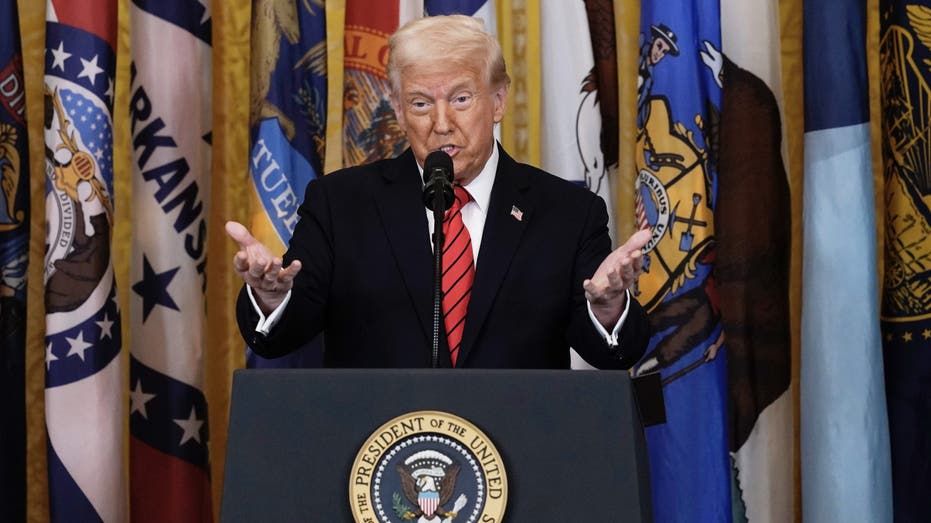
President Donald Trump, with the stroke of a pen, signed an executive order this week to begin the longstanding conservative goal of demolishing the Department of Education. “Today we take a very historic action that was 45 years in the making,” Trump said at a White House signing ceremony. “It’s about time.” Trump has been on a tear since returning to the White House two months ago, flexing his political muscles to expand presidential powers as he’s upended longstanding government policy and made major cuts to the federal workforce through a flurry of executive orders and actions. Trump has signed close to 100 executive orders since his inauguration, according to a count from Fox News, which far surpasses the rate of any recent presidential predecessors during their opening weeks in office. CHECK OUT WHAT THE LATEST FOX NEWS NATIONAL POLL SAYS ABOUT PRESIDENT TRUMP The president touts that “a lot of great things are happening” and that “things are doing very well,” but it’s clear that Americans are divided on the job Trump’s doing so far in his second tour of duty in the White House. Trump’s approval rating stood at 49% in the latest Fox News national survey, with 51% giving the president a thumbs down in the survey, which was conducted March 14-17. PROBLEMATIC POLL NUMBERS FOR THE DEMOCRATS The Fox News poll is the latest national survey to Trump’s approval rating slightly underwater, and it’s also the latest to indicate a massive partisan divide over the president and his agenda. Ninety-two percent of Republican respondents approved of the president’s performance, while an equal percentage of Democrats gave Trump a big thumbs down. More than six-in-ten independents said they disapproved of the job Trump is doing. The president’s 49% overall approval rating matches the all-time high for Trump in Fox News polling, which he last reached in April 2020, near the end of his first term in office. And that’s six points higher than where he stood at this point in his first administration (43% approval in March 2017). Trump’s poll numbers were almost entirely in negative territory in most surveys for the entirety of his first term in office. HEAD HERE FOR THE LATEST FOX NEWS POLLING “The difference is largely a function of the consolidation of the Republican base,” Daron Shaw, who serves as a member of the Fox News Decision Team and is the Republican partner on the Fox News Poll, noted. “The party’s completely solidified behind him,” added Shaw, a politics professor and chair at the University of Texas, who noted that Trump’s current rock-solid GOP support wasn’t the case at the start of the first term, when he had troubles with some Republicans. Shaw highlighted that “Democrats were consolidated against Trump in 2017. They’re consolidated against him now.” Pointing to recent polls indicating Democratic Party favorability at all-time lows, he said “they don’t like their own party very much, but they all agreed that they don’t like Trump.” While Trump’s poll numbers are superior to where he stood eight years ago, there’s been a bit of slippage. An average of all the most recent national polls indicates that Trump’s approval ratings are just below water. Trump has seen his numbers edge down slightly since returning to the White House in late January, when an average of his polls indicated the president’s approval rating in the low 50s and his disapproval in the mid-40s. Contributing to the slide – the economy and jitters that Trump’s tariffs on both foes and friends will spark further inflation, which was a pressing issue that kept former President Biden’s approval ratings well below water for most of his presidency. The latest Fox News poll as well as other recent surveys point to growing skepticism about Trump’s economic actions and policies. Shaw says it all comes down to independents. “If the Republicans are locked down in favor of Trump and Democrats locked down in opposition, it’s just independents,” he said. Polls indicate independents are currently giving Trump a thumbs down on his handling of the economy. But Shaw offered that “if inflation comes down a bit, if there’s some growth, those numbers are going to flip. That’s what independents do. They go with the times.”
AAP stages protest over alleged non-compliance of Rs 2,500 to women scheme in Delhi: ‘Bank of Jumla’
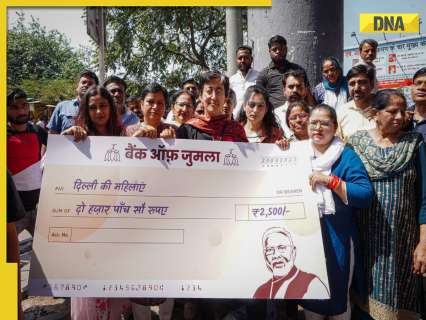
Aam Aadmi Party on Saturday staged a protest against the Bharatiya Janata Party-led Delhi government over the alleged non-implementation of Mahila Samman Yojana, which aims to provide financial support of Rs 2,500 every month to eligible women.
Trump admin pulling legal status for more than 530K migrants
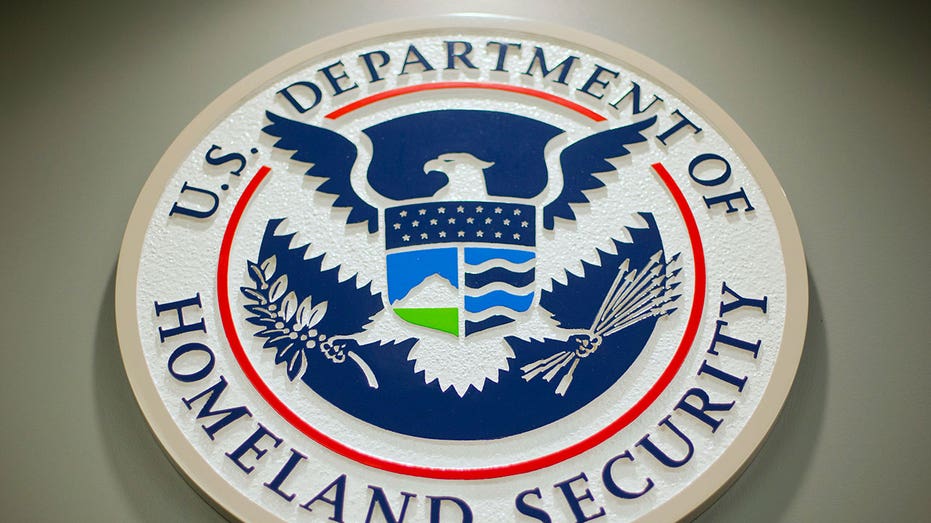
The Trump administration will revoke the temporary legal status of more than half a million migrants from Cuba, Haiti, Nicaragua and Venezuela who entered the U.S. legally, according to a notice posted Friday in the Federal Register. The roughly 532,000 migrants have been told to leave the country before their humanitarian parole and accompanying work permits are canceled on April 24, giving them a month from when the notice is formally published on March 25. The migrants were allowed to fly directly to the U.S. after applying from abroad under a policy started during the Biden administration that was designed to open legal migration pathways, but President Donald Trump suspended the program when he returned to office in January. The program, CHNV, allowed the migrants and their immediate family members to fly into the U.S. if they had American sponsors. They could then remain in the country for two years under a temporary immigration status known as parole. DHS’ KRISTI NOEM SAYS TRUMP ADMIN WILL RESUME CONSTRUCTION OF 7 MILES OF SOUTHERN BORDER Launched in 2022, the program first applied to Venezuelans before it was expanded to additional countries. The Biden administration had argued that CHNV would help reduce illegal crossings at the southern border and allow better vetting of people entering the country amid an influx of migrants entering through the U.S.-Mexico border. Trump’s Department of Homeland Security criticized the Biden administration on Friday, arguing that the program failed to achieve its goals, the BBC reported. The agency said in a statement that Biden officials had “granted them [migrants] opportunities to compete for American jobs and undercut American workers; forced career civil servants to promote the programs even when fraud was identified; and then blamed Republicans in Congress for the chaos that ensued and the crime that followed.” But the notice in the Federal Register said some migrants in the U.S. under CHNV may be allowed to remain in the country on a case-by-case basis. CHNV helped about 213,000 Haitians enter the U.S. amid deteriorating conditions in their home country, as well as more than 120,700 Venezuelans, 110,900 Cubans and more than 93,000 Nicaraguans, according to the BBC. Last month, DHS announced plans to end another immigration designation, temporary protected status, or TPS, for 500,000 Haitians living in the U.S. legally. TPS was given to migrants from designated countries facing unsafe conditions, including armed conflict. The agency also ended TPS for Venezuelans living in the U.S., although this is being challenged in court. JUDGE GIVES MAHMOUD KHALIL LEGAL TEAM MORE TIME TO REVIEW IMMIGRATION CASE Trump’s efforts to remove legal and illegal migrants from the U.S. since taking office in January as part of his immigration agenda have faced numerous legal obstacles. The Trump administration is also reportedly dismantling internal watchdogs for DHS, including its Office for Civil Rights and Civil Liberties, which investigated allegations of abuse and discrimination within immigration enforcement, according to Bloomberg News.
MK Stalin leads Joint Action Committee meet on delimitation in Chennai, calls for fair delimitation
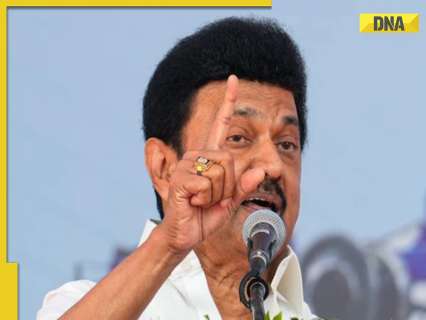
Tamil Nadu Deputy CM Udhayanidhi Stalin stated that the states that have participated in the meeting have made significant efforts to control and manage the population growth but instead of being rewarded for this achievement, they are now at risk of losing their political representation.
India’s ‘political iftars’ once stopped riots. Are they corrupt stunts now?
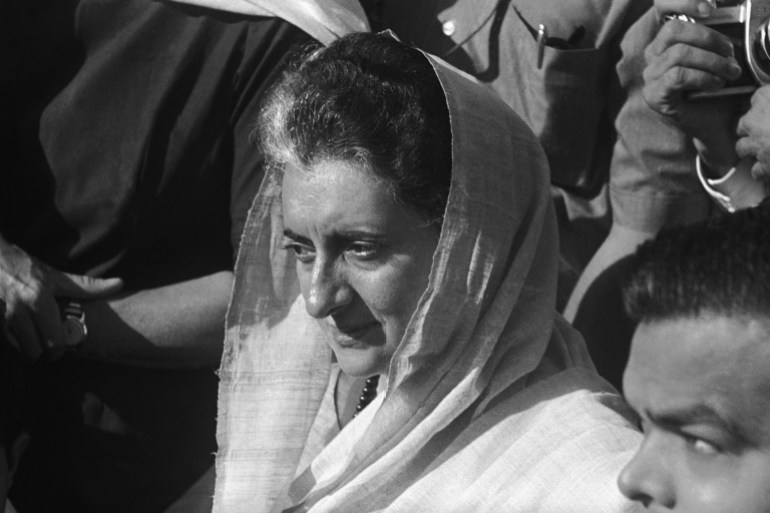
New Delhi, India – It was the month of Ramadan in 1974, and the northern city of Lucknow, a hub of India’s Shia community, was on the boil. Hemwati Nandan Bahuguna, a stalwart of India’s then-ruling Indian National Congress party, had taken over as the chief minister of the state of Uttar Pradesh, whose capital is Lucknow, only a few months earlier. Shia-Sunni clashes had erupted at a time on the Muslim calendar that represents peace, prayer, reflection and a sense of community. To push for a truce, Bahuguna invited Shia leader Ashraf Hussain for a meeting. Hussain refused, saying he was unable to come because he was fasting. So Bahuguna made Hussain an offer: He could break his fast at the chief minister’s residence. Hussain accepted. The menu included fruit, sherbet, sheermal, kebabs and Lucknow’s famous biryani. And successful truce talks. At a time when Hindu-Muslim tensions in Uttar Pradesh and many other parts of India were also on the rise, Bahuguna’s iftars became a yearly affair. In subsequent years, the meals were planned, and guest lists started expanding. Advertisement In his book An Indian Political Life: Charan Singh and Congress Politics, Paul R Brass noted that Bahuguna established “a happy rapport with the Muslims” by acting boldly to suppress “anti-Muslim rioting”. The veteran politician started a phenomenon that has since become a staple of India’s political calendar: Ramadan is crammed with iftars hosted by parties and politicians eager to host influential Muslims as they court the community’s votes. Over the past 50 years, these iftars have become shows of political strength and platforms to forge alliances or to forgive past skirmishes to move on. On the one hand, analysts said, political iftars help underscore India’s secular identity – non-Muslim political leaders hosting Muslims for a meal during the holy month. “Iftar reflected a certain notion of plurality, an idea of celebrating differences in commonality,” sociologist Shiv Visvanathan told Al Jazeera. But political iftars have also attracted increasing pushback — and not just from current Prime Minister Narendra Modi’s Bharatiya Janata Party, which has for the most part shunned these events. Critics have argued that these iftars are performative acts that are more about the interests of the leaders hosting them than about the Muslim community. “It was not sought by Muslims, and we must always remember that. Political iftar parties were not a creation of the Muslims,” said Rasheed Kidwai, a political analyst who has attended several such events. “Political iftar was a kind of religious outreach programme.” Advertisement “It was envisaged by non-Muslim political actors, and the Muslims were guests. They were just the showpieces.” Indian Prime Minister, Indira Gandhi invited elite Muslims to her iftars but failed to hold on to enough Muslim voters to win the 1977 elections [File: AP Photo] When Indira Gandhi used iftars for revival — but failed By the mid-1970s, Prime Minister Indira Gandhi’s relations with Bahuguna, her party leader in charge of the politically critical state of Uttar Pradesh, India’s most populous, often dominated headlines. The narrative: Bahuguna’s popularity in Uttar Pradesh, across all communities, unsettled Gandhi, whose courtiers tried to shape her mind against the state leader. In 1975, Bahuguna resigned. Some said he was pushed into quitting. That year would prove the start of one of independent India’s most tumultuous periods. Faced with a student movement against her and an emboldened political opposition, Gandhi was also found guilty by a High Court of misusing state resources to win the 1971 elections. A day after India’s Supreme Court upheld that verdict, which also barred her from contesting elections for six years, Gandhi imposed a state of national emergency, arresting opposition leaders and suspending civil liberties. The state of emergency would also strain the Congress party’s ties with one of its most loyal support bases: India’s Muslims. Since independence in 1947, the community — India today has 200 million Muslims, behind only Indonesia and Pakistan — had largely voted for the Congress party, initially under the nation’s first prime minister, Jawaharlal Nehru, and then under Gandhi. Survivors of the bloody partition of British India, which killed more than 2 million people and displaced millions, India’s Muslims faced questions about their place in the new nation, and a secular Nehru, who committed himself to safeguarding their security, was seen as their best bet. Advertisement That pattern held all the way up until and including the 1971 elections, which Gandhi won, Theodore P Wright Jr, the late political scientist known for his work on South Asian politics, wrote in 1977 in Asian Survey, a California-headquartered journal. However, during the national emergency, Gandhi’s government oversaw two campaigns that alienated Muslims. An aggressive family planning initiative aimed at controlling population growth used forced sterilisations that spawned fears among Muslims that a Hindu majority country was in essence trying to end the growth of their community. In several instances, men from villages with large Muslim populations were rounded up and taken to sterilisation camps, where they were forced to undergo vasectomies. In some cases, the men fought back, leading to deadly clashes with security forces. In all, from 1974 to 1979, India sterilised more than 18 million people — double the number that underwent sterilisation in the previous five years. At the same time, Gandhi’s government led a large slum demolition campaign as part of an urban beautification effort that sought to clear informal settlements in cities. Tens of thousands of people were forcibly evicted from their homes as bulldozers tore down their shanties. In many cases, they were not offered any alternative housing. Muslims, India’s poorest community by religion, were disproportionately impacted. Gandhi’s younger son, Sanjay Gandhi, was the face of these campaigns, which stirred widespread resentment among Muslims. Advertisement After the state of emergency was lifted, Bahuguna left the Congress to join a newly formed group of other defectors called the Congress for Democracy (CFD). Religious leaders like Abdullah Bukhari, the shahi imam of Delhi’s Jama Mosque, openly backed the new group,
Russia-Ukraine war: List of key events, day 1,122
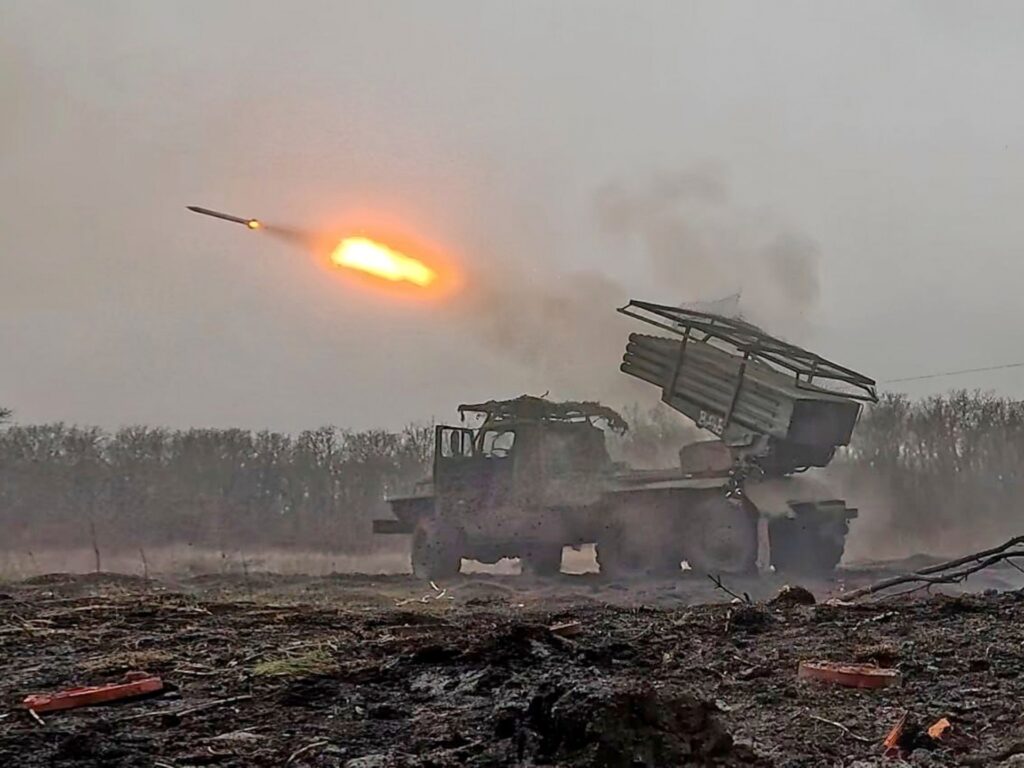
These are the key developments on day 1,122 of Russia’s war on Ukraine. Here is the roundup of key events on Saturday, March 22. Fighting Russian attacks killed two people late on Friday in Ukraine’s southeastern city of Zaporizhzhia and three more in the country’s north and east, officials said. Zaporizhia regional governor, Ivan Fedorov, said nine people were also injured in the attack and the city had been struck more than 10 times. CCTV footage recorded on Friday showed debris falling outside an apartment building following a loud explosion in Russia’s southern city of Rostov-on-Don. Rostov-on-Don’s acting regional governor, Yury Slyusar, said a Ukrainian drone struck an apartment building on the 17th floor, injuring two people. Attacks took place in the southern Russian region of Voronezh, where regional governor Alexander Gusev said more than 10 Ukrainian drones were destroyed. No damage or casualties were reported. Ukraine’s public prosecutor’s office said that Russia had dropped six glide bombs on the village of Krasnopillya in Ukraine’s Sumy region. In another village, two people were injured. Air raid warnings were issued in the Ukrainian capital Kyiv and other parts of the country, with Kyiv Mayor Vitali Klitschko calling on people to seek shelter. According to Klitschko, debris from a downed flying object hit a building in the capital, causing a fire. Satellite imagery showed craters and damaged bunkers at Russia’s Engels strategic bomber base after Ukraine struck it with drones on Thursday. The attack triggered a major blast and fire. The base in Engels hosts Russia’s Tupolev Tu-160 nuclear-capable heavy strategic bombers. Ukraine accused Russia of illegally pressuring Ukrainians in occupied territory to change their legal status or leave and said it would report the practice to the International Criminal Court. Advertisement Russia – which now controls nearly a fifth of Ukraine’s territory – issued a presidential decree on Thursday saying Ukrainian citizens living “in Russia without legal grounds” should “regulate” their status by September. Russia’s Ministry of Defence accused Ukrainian forces of blowing up a gas metering station near the town of Sudzha in Russia’s Kursk region, in what it described as a “deliberate provocation by the Kyiv regime … to discredit the US president’s peaceful initiatives”. Ukraine’s military General Staff rejected Moscow’s accusations and blamed the Russian military for shelling the Sudzha gas metering station as part of Russia’s “discrediting campaign”. The gas metering station serves a major pipeline that had pumped Russia’s natural gas to Europe until supplies were halted last year. Ceasefire Talks between Ukrainian and United States representatives in Saudi Arabia on Monday will focus primarily on technicalities surrounding a potential limited ceasefire between Russia and Ukraine, Ukrainian Foreign Ministry spokesman Heorhii Tykhyi said. Tykhyi reiterated that Ukraine had agreed to the US proposal for a full ceasefire lasting 30 days and again blamed Russia for the failure to implement any sort of ceasefire so far. Ukrainian Foreign Minister Andrii Sybiha will not travel to Saudi Arabia for the talks, but Defence Minister Rustem Umerov is set to participate. Western military planning to enforce a potential ceasefire in Ukraine is set to intensify in London next week as the United Kingdom said “nothing is off the table” over possible troop deployment for Kyiv. “Thousands” of personnel would be required to support any operation whether by “sea, on land or in the air” as allies prepare “for all eventualities” amid diplomatic efforts to end the war, the UK said. Ukraine does not consider a United Nations mission an alternative to the deployment of a contingent of foreign troops or security guarantees to end the war with Russia, President Volodymyr Zelenskyy said. “With all due respect, the UN will not protect us from the occupation or [Russian President Valdimir] Putin’s desire to come back,” Zelenskyy said at a joint news conference with Czech President Petr Pavel in Kyiv. Advertisement Politics and diplomacy North Korean leader Kim Jong Un expressed his unwavering support for Russia’s war in Ukraine during a meeting with a top Russian security official in Pyongyang, North Korean state media said. Friday’s meeting between Kim and Sergei Shoigu, Russia’s Security Council secretary, followed a South Korean intelligence assessment in late February that North Korea had likely sent additional troops to Russia after its forces suffered heavy casualties fighting in the Russia-Ukraine war. Shoigu conveyed a message from Putin, who extended his greetings to Kim and expressed gratitude for North Korea’s “solidarity with Russia’s position on all critical geopolitical issues, particularly on the Ukrainian issue”, according to his televised comments. South Korea’s Foreign Minister Cho Tae-yul said military cooperation between North Korea and Russia must stop, and North Korea should not be rewarded for its wrongdoings in supporting the war in Ukraine. Japan’s foreign minister told his Chinese and South Korean counterparts on Saturday that unilaterally changing the status quo by force was unacceptable. “On the situation in Ukraine, I emphasised the need for the international community to unite in calling out that any attempt to unilaterally change the status quo by force will not be tolerated anywhere in the world,” Takeshi Iwaya told reporters following trilateral talks in Tokyo with Beijing and Seoul. Thousands of people demonstrated against Slovak Prime Minister Robert Fico on Friday, charging that he has authoritarian tendencies and a pro-Russian stance. Serbia’s deputy prime minister said Russia’s spy services had helped Belgrade authorities respond to months of antigovernment protests, remarks which critics said revealed that the government had become dependent on Moscow. “I am very grateful to Russia’s special services, which always support us in our fight against colour revolutions, primarily with information,” Deputy Prime Minister Alexandar Vulin said in an interview with Russia’s RIA state news agency. Advertisement Russia criticised the European Union’s plans to significantly boost the bloc’s defences. The UK government said it had frozen more than 25 billion pounds ($32bn) in Russian assets since the start of the war in Ukraine three years ago. Military aid Germany’s Bundestag budget committee approved $3.25bn in additional military aid for Ukraine
Days after agreeing on marriage, man blocks girlfriend’s number, later shoots her in leg; probe on

After the brutal killing of a Assistant Sub-Inspector (ASI) in Bihar’s Munger, yet another chilling incident has surfaced in the state, putting law and order in docks.
DeSantis says Florida returned $878M in taxpayer funds to federal government after meeting with Musk, DOGE
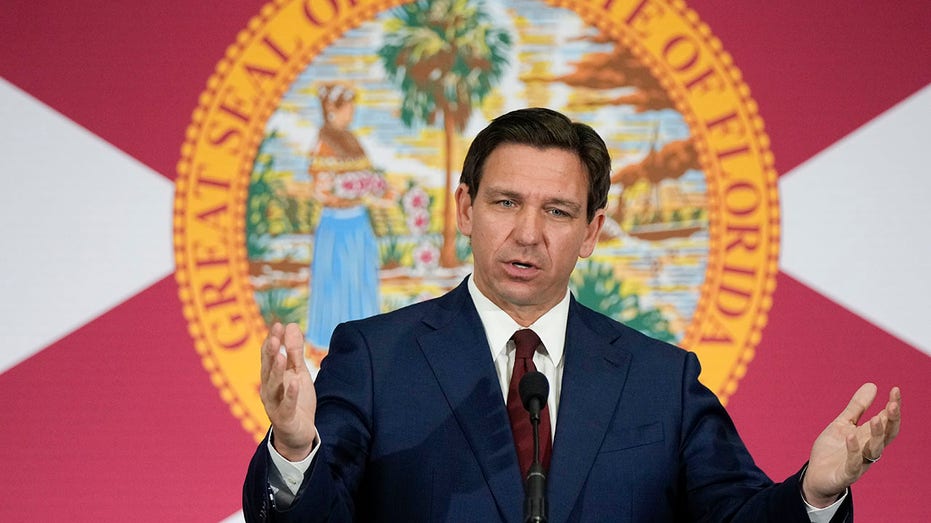
Florida Gov. Ron DeSantis, a Republican, said Friday that the state was returning more than $878 million to the federal government that it had been attempting to give back for the past few years during the Biden administration. DeSantis’ office informed the U.S. Treasury Department that $878,112,000 would be returned to the federal government. The governor said the move came after a meeting with billionaire Elon Musk and his team at the newly formed Department of Government Efficiency, or DOGE. “For years, Florida has been trying to return federal funds to the federal government due to the ideological strings attached by the Biden Administration—but they couldn’t even figure out how to accept it,” DeSantis wrote Friday on X. FOX NEWS POLL: VOTERS HAVE CONCERNS ABOUT DOGE, EVEN AS THEY SEE NEEDS FOR CUTS “Today, I met with @elonmusk and the DOGE team, and we got this done in the same day,” he continued. DeSantis suggested that other states “should follow Florida in supporting DOGE’s efforts!” The governor’s office said in its email to the Treasury Department that it will search for additional excess federal funds that can be returned. “At the direction of Governor DeSantis and following his meeting with Elon Musk today, the State of Florida is formally returning $878,112,000 in taxpayer dollars to the federal government as part of DOGE’s efforts,” the email said. “We will also continue to identify other unused or surplus federal funding granted to Florida and determine if further refunds can be made. We hope our actions serve as a model for other states to follow.” Musk, who also serves as a senior advisor to President Donald Trump, responded to the governor’s post on X. “Almost a billion dollars of your taxpayer money saved,” Musk said on the social media platform. DeSantis announced last month the creation of Florida’s DOGE task force to “further eliminate waste within state government, save taxpayers money, and ensure accountability in Florida.” TRUMP ADMIN GUTS INSTITUTE OF PEACE OF ‘ROGUE BUREAUCRATS’ AFTER DOGE STANDOFF IN GOVERNMENT OFFICE CLICK HERE TO GET THE FOX NEWS APP “Florida has set the standard for fiscally conservative governance, and our new Florida DOGE task force will do even more to serve the people of Florida,” DeSantis said at the time. “It will eliminate redundant boards and commissions, review state university and college operations and spending, utilize artificial intelligence to further examine state agencies to uncover hidden waste, and even audit the spending habits of local entities to shine the light on waste and bloat.”
Meerut murder case: Accused Muskan, Sahil celebrated Holi days after killing her husband Saurabh Rajput and chopping up body
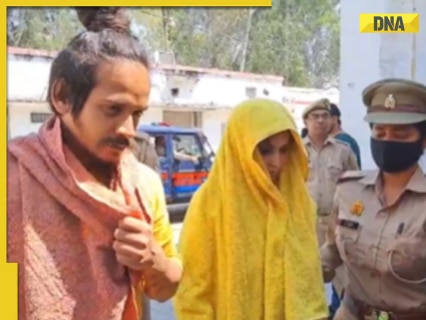
In the video, Muskan and Sahil can be seen dancing and laughing for the camera, their faces and clothes covered in Holi colours. There is music in the background and some other people can also be seen in the video.
Karnataka bandh today: Will banks, offices, schools remain closed on March 22? All you need to know
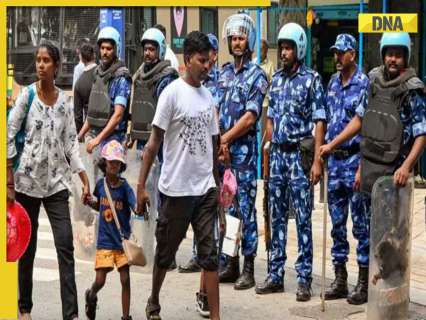
Several pro-Kannada groups have called a shutdown in Karnataka on Saturday, March 22, for a period of 12 hours from 6 am to 6 pm.
